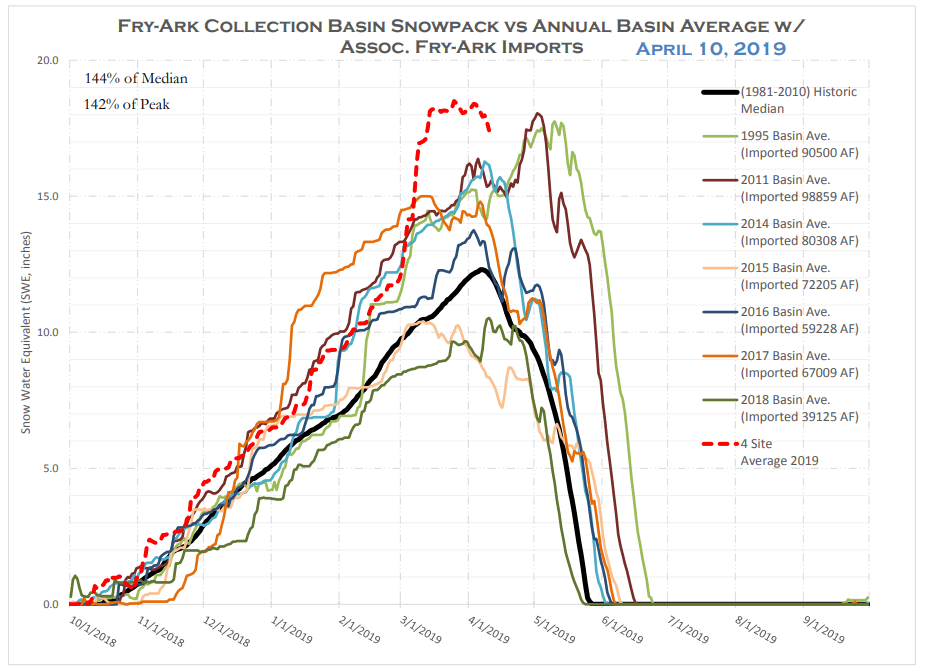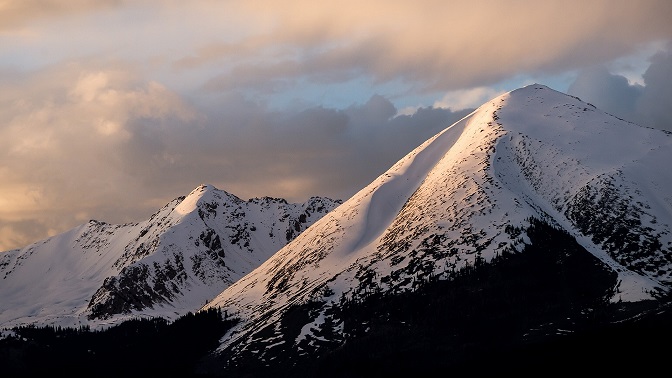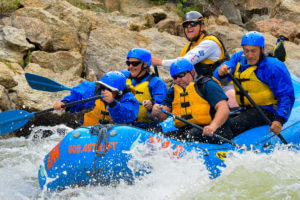Each winter, Colorado whitewater rafters follow the snow depth data transmitted by sensitive gauges strategically placed at key locations high up in the Rocky Mountains.
With each snowfall, rafting enthusiasts like to compare the current snow depth, and the moisture contained within it known as “Snow Water Equivalent” (SWE), against previous seasons. This helps us predict how much water will eventually fill our rivers. This seven month drama plays annually like a riveting murder mystery whose accumulated clues slowly build toward an unexpected conclusion.

This winter of 2019 continues to impress with nearly historic snow. What does this mean for the upcoming whitewater rafting season on Colorado’s most popular river, the Arkansas?
While the total accumulated snow on the ground and its SWE gives us an important window of understanding, there are other considerations that affect how it melts and its eventual runoff.
For each river in Colorado, there may be a different runoff forecast because it is common to have significant variations in snow amounts between different river drainages. Therefore, for an accurate forecast, one must carefully consider which snow gauges are being analyzed to be sure that they are the best indicators for the selected river.
April and May’s weather also play a surprisingly significant role. Even though the peak snow amount and SWE is typically around April 10th, it can fluctuate wildly.
Drought years are often triggered by an early and warm spring where snow starts to melt and evaporate earlier than normal and a lot of snow is lost before its eventual runoff in late May.
Conversely, a snowy, cloudy, and cool spring results in preserving and even adding to the snow pack
resulting in higher river flows. This was the case with the highest water recorded on the Arkansas River in 1995 when peak snow depth and SWE occurred uniquely late in mid-May.

Another interesting phenomena about melting snow is that the resulting water is not a direct relationship to its SWE. Slightly below average snow often produces significantly less than average water.
Since above average snow amounts melt more slowly due to the way snow is keeps itself cold, above average snow amounts produce significantly more water than might be expected.
Currently, the SWE readings for the Arkansas River are quite high. This will certainly result in exciting rafting with big splashes and above average water this rafting season. Above average water typically means a higher than average peak flow and a longer season. However, the upcoming weather in April and May will be the last clue to how much water rafters can expect on Colorado’s Arkansas River.

